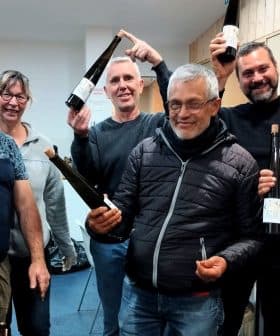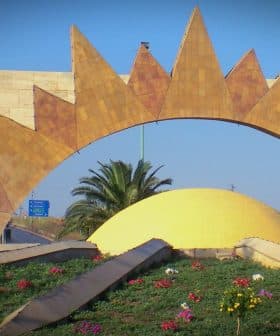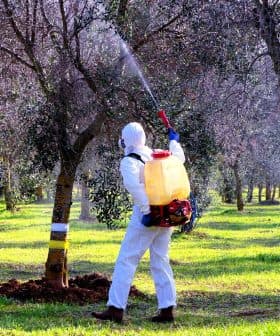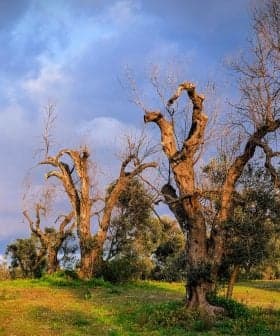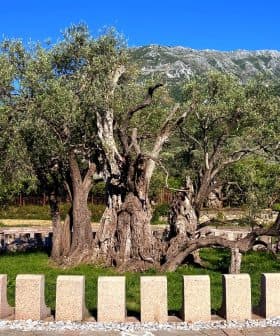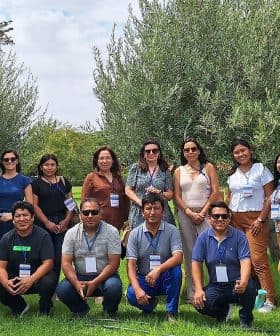 14.0K reads
14.0K readsOlive Varieties
New Efforts to Promote Rare White Olive Variety in Calabria
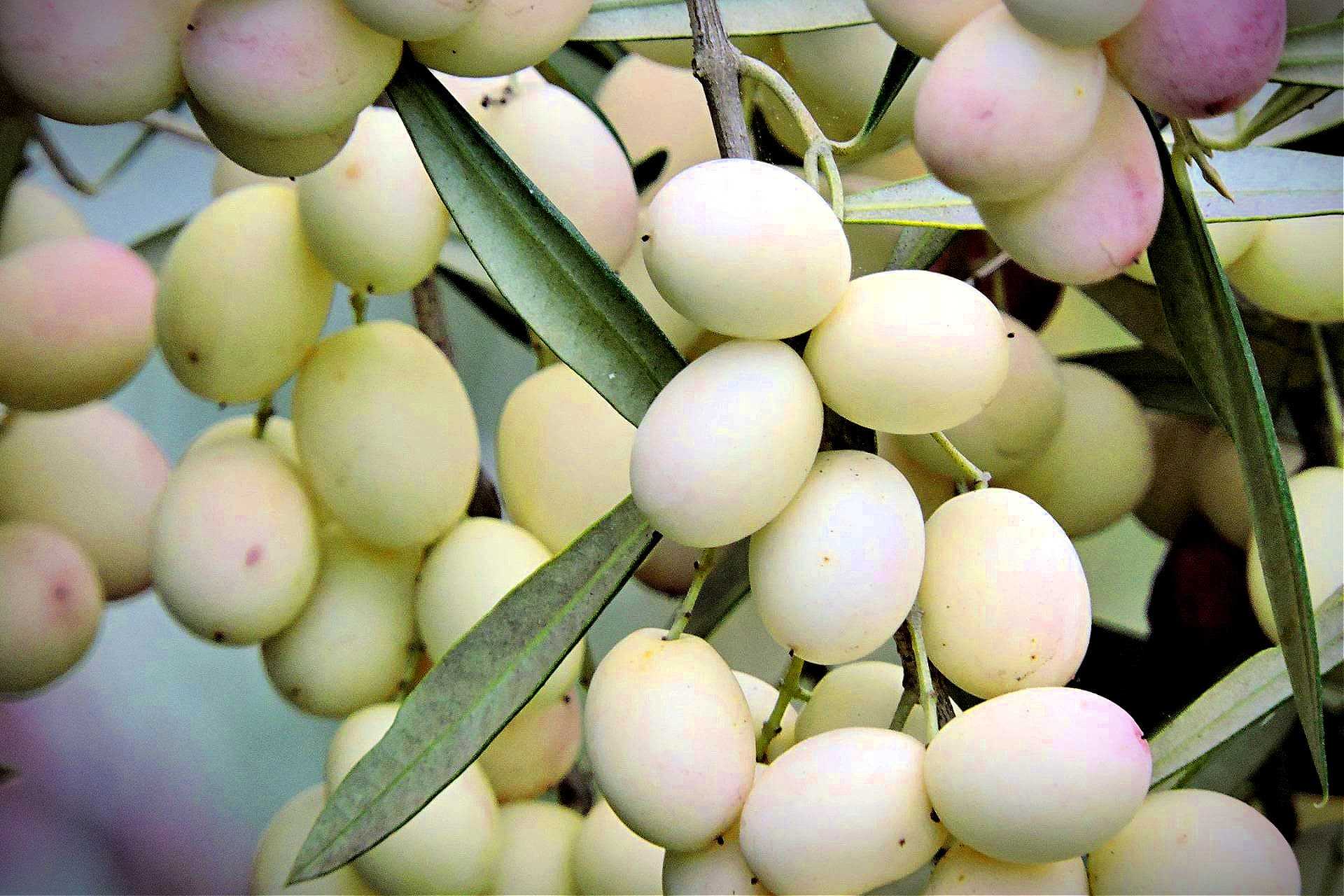
The Leucocarpa cultivar, a rare white olive variety in Calabria, has been recognized by the regional government as a symbol of the region, leading to renewed interest in researching and developing it. The ivory-white fruit-bearing tree is being studied by experts and volunteers to understand its historical and religious significance, with plans to promote its unique heritage by planting more trees and involving young people in appreciating its cultural value.
The Leucocarpa cultivar, a rare white olive variety once widely spread in the southern Italian region of Calabria, has been officially recognized by the regional government as a symbol of the region.
Its unique appearance, history and the distinctive oil that it yields have led to a renewed interest in further researching and developing the cultivar in the region.
This tree is a symbol of Calabrian nature. With our announcement, we are reconnecting with our past and promoting the idea that our society was founded on peace among citizens and nations.
“The decision of the regional government will protect the Leucocarpa variety and promote Calabria’s roots,” Sergio De Caprio, regional secretary for environmental protection, told Olive Oil Times.
The announcement comes on the heels of the work of experts and volunteers who recently began mapping the presence of the ivory-white fruit-bearing tree throughout the region.
See Also:Rediscovering Ancient Varieties to Meet Today’s Challenges“Those white drupes are fascinating; their connection to the religious history of our people comes immediately to mind. The tree gives off a unique sense of purity and beauty,” De Caprio said.
“This tree is a symbol of Calabrian nature, introduced by Basilian monks from the Greek island of Kasos in the 6th century A.D.,” he added. “With our announcement, we are reconnecting with our past and promoting the idea that our society was founded on peace among citizens and nations.”
Environmental organizations, such as Italia Nostra and the World Wildlife Fund, are cooperating with archeologists to understand better the role the white olive tree played in the region’s history. Meanwhile, the local government is working to bring young people and students to appreciate its unique heritage.
“We planted the first Leucocarpa tree in the San Luca village together with the local students,” De Caprio said. “Our goal is to involve them in discovering their roots and promote extra virgin olive oil culture.”
“Every year, we will plant those trees with students throughout the region and the extra virgin olive oil quality and culture will be brought into the schools,” he added. “Extra virgin olive oil is part of their heritage, as is the Leucocarpa tree.”
Leucocarpa olives turn ivory-white when they are ripe due to chlorophyll degradation when the synthesis of anthocyanins and other flavonoids do not activate. These polyphenolic secondary metabolites are responsible for the standard darker drupe colors in other cultivars.
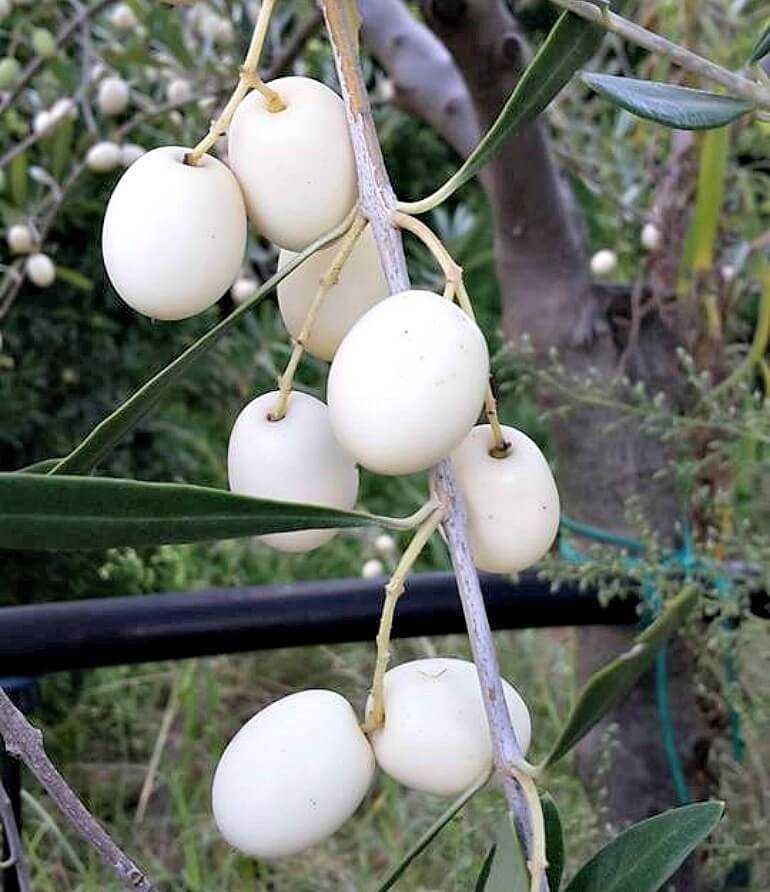
Photo: Gino Vulcano
“There is so much we do not know yet about this tree, such as how it was grown and perceived,” said Anna Rotella, an archeologist working on the project. “But thanks to the work of the volunteers, we can already confirm its presence near many places associated with cults in Calabria.”
Rotella and her colleagues believe that the distinctive olive oil derived from Leucocarpa played a role in cult activities.
“In the past, temples and churches could not count on sufficient ventilation, so the choice of the right fuel for using indoor lamps was vital,” she told Olive Oil Times. “Leucocarpa olive oil produced only modest smoke emissions, unlike lampante olive oil.”
The researchers believe the introduction of electricity rendered that specific use of the Leucocarpa olive oil obsolete, which led to many trees being abandoned.
“We used to consider Leucocarpa a rare plant and while it is still quite rare, it spread across our region more than we thought,” Rotella said. “Some farmers still cut them down in their fields because they do not believe it can bring them a profit and, over time, wildfires have also limited the presence of the tree in the territory.”
“Still, many remember those trees in the vicinity of churches,” she added. “Others associate that olive oil to its ancient use in child nutrition.”
Rotella explained that its presence near temples and graveyards demonstrates the role of the tree in religious rituals.
“A beautiful tradition in the Spezzano Albanese village included a funeral procession, which streamed through the streets of the town and ended up just in front of the white olive tree,” she said. “As the coffin would become heavier for the bearers, they would lean it right on the tree.”
However, she added that the historical connection of the tree with the people must continue to be investigated.
“These white olive trees come with a specific identity, which is why we need to gather all those streams of memories before they fade away,” she added.
See Also:Remains of 2,500-Year-Old Mill Discovered in Southern ItalyA renewed interest in the Leucocarpa tree could help establish what Rotella described as the “white olive route,” a touristic and gastronomic project that would involve all of the 80 Calabrian villages where the tree has been identified. This project has piqued the interest of some local olive oil producers.
Antonio Muzzupappa, a grower who also operates a mill in the Calabrian city of Vibo Valentia, has planted 350 Leucocarpa trees in recent years.
“Propagating this olive tree by grafting can be a real challenge,” Muzzupappa told Olive Oil Times. “Whereas with the traditional grafting, we have a very low percentage of failures – 50 of every 1,000 at most – with Leucocarpa, almost half of them will not work. Still we hope to add 150 more white olive trees in the next few months.”
Muzzupappa remembers how his ancestors propagated the tree by using the radial shoots, resulting in trees whose roots would often not be strong enough.
Muzzupappa focuses on growing and transforming several different varieties of olives, which naturally led him to the idea of producing organic Leucocarpa extra virgin olive oil, both for cooking and for blending with other oils.
“This past season, we already had a few olives to harvest and we produced a sample of about 20 liters of Leucocarpa oil,” Muzzupappa said. “It is transparent and at first, it looks like seed oil. We hope this olive oil will be increasingly used for frying as a substitute for lesser-quality oils.”
“When used to this end, it does not produce smoke and still encompasses all of the good qualities of a true extra virgin olive oil,” he added.
Muzzupappa confirmed that he is working with other Calabrian growers to expand the cultivation of Leucocarpa olives and to promote it as a perfect-for-frying olive oil.
The extra virgin olive oil obtained from the olives “has the same characteristics as all the others concerning the composition of fatty acids, flavors and aromas typical of a light fruity product,” Innocenzo Muzzalupo, an olive researcher at the Council for Agricultural Research and Economics, previously told Olive Oil Times.


